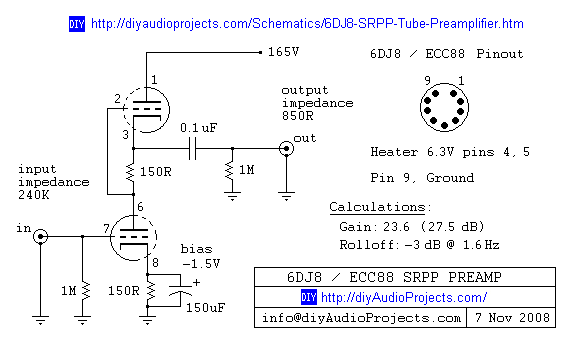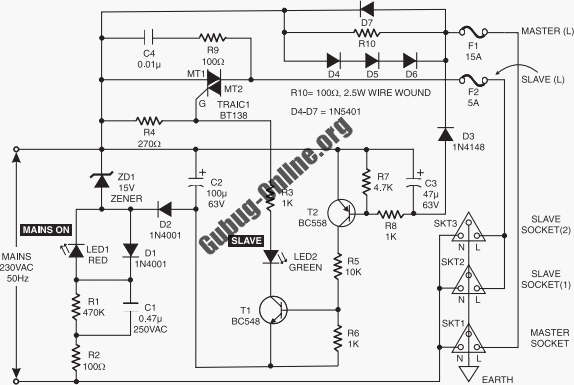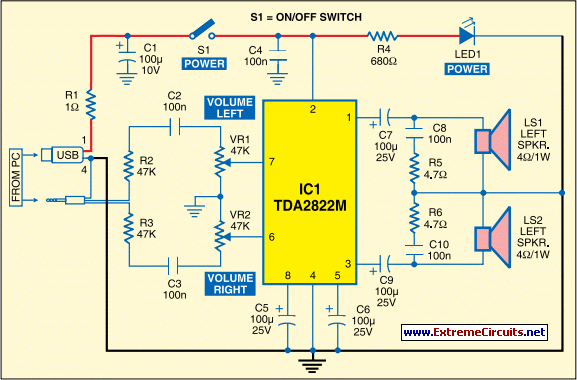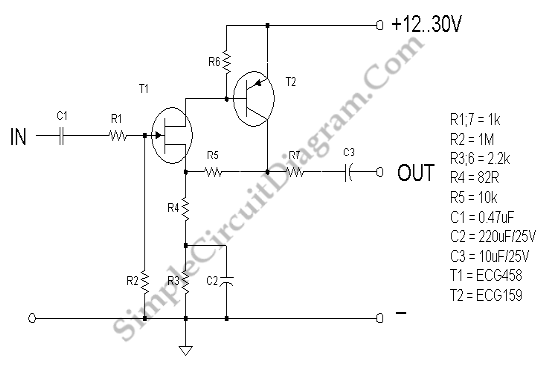
Low impedance microphone amplifier
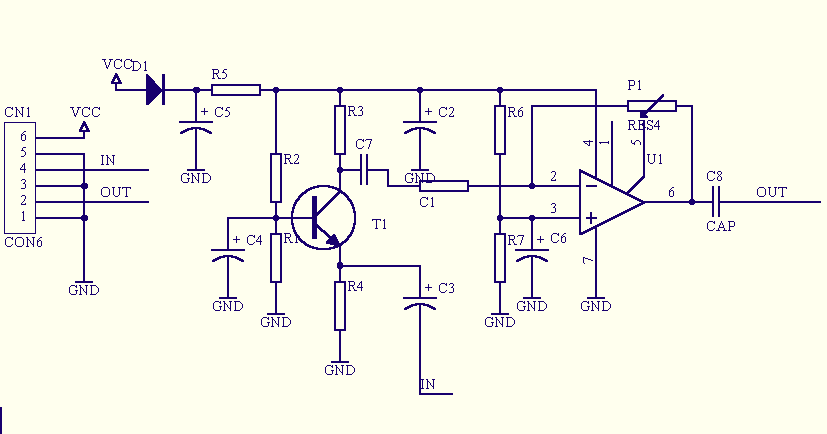
The circuit is a microphone amplifier for use with low impedance (~200 ohm) microphones. It will work with stabilized voltages between 6-30VDC. If you don`t build the impedance adapter part with T1, you get a micamp for higher impedance microphones. In this case, you should directly connect the signal to C7.
The microphone amplifier circuit is designed to enhance audio signals from low impedance microphones, typically around 200 ohms. This circuit operates efficiently within a voltage range of 6 to 30 VDC, allowing for flexibility in various applications. The core functionality of this circuit relies on a combination of active components, including transistors or operational amplifiers, which amplify the weak microphone signal to a more usable level.
The inclusion of an impedance adapter, represented by the transformer T1, is critical when dealing with low impedance microphones. This component ensures that the microphone's output is appropriately matched to the amplifier's input, thereby maximizing the signal transfer and minimizing loss. If the impedance adapter is omitted, the circuit can still function as a microphone amplifier for higher impedance microphones. In this scenario, the microphone signal can be directly connected to capacitor C7, which serves to block any DC offset while allowing the AC audio signal to pass through to the subsequent amplification stages.
The design of this microphone amplifier may also include additional components such as resistors for biasing, capacitors for filtering, and possibly feedback elements to stabilize the gain and frequency response. Careful consideration of these components is essential to ensure optimal performance across the intended frequency range of the microphones being used. The circuit layout should also account for minimizing noise and interference, which can be achieved through proper grounding techniques and component placement.
Overall, this microphone amplifier circuit is a versatile solution for audio applications requiring the amplification of low impedance microphone signals, providing a robust and flexible platform for various audio processing needs.The circuit is a microphone amplifier for use with low impedance (~200 ohm) microphones. It will work with stabilized voltages between 6-30VDC. If you don`t build the impedance adapter part with T1, you get a micamp for higher impedance microphones. In this case, you should directly connect the signal to C7. 🔗 External reference
The microphone amplifier circuit is designed to enhance audio signals from low impedance microphones, typically around 200 ohms. This circuit operates efficiently within a voltage range of 6 to 30 VDC, allowing for flexibility in various applications. The core functionality of this circuit relies on a combination of active components, including transistors or operational amplifiers, which amplify the weak microphone signal to a more usable level.
The inclusion of an impedance adapter, represented by the transformer T1, is critical when dealing with low impedance microphones. This component ensures that the microphone's output is appropriately matched to the amplifier's input, thereby maximizing the signal transfer and minimizing loss. If the impedance adapter is omitted, the circuit can still function as a microphone amplifier for higher impedance microphones. In this scenario, the microphone signal can be directly connected to capacitor C7, which serves to block any DC offset while allowing the AC audio signal to pass through to the subsequent amplification stages.
The design of this microphone amplifier may also include additional components such as resistors for biasing, capacitors for filtering, and possibly feedback elements to stabilize the gain and frequency response. Careful consideration of these components is essential to ensure optimal performance across the intended frequency range of the microphones being used. The circuit layout should also account for minimizing noise and interference, which can be achieved through proper grounding techniques and component placement.
Overall, this microphone amplifier circuit is a versatile solution for audio applications requiring the amplification of low impedance microphone signals, providing a robust and flexible platform for various audio processing needs.The circuit is a microphone amplifier for use with low impedance (~200 ohm) microphones. It will work with stabilized voltages between 6-30VDC. If you don`t build the impedance adapter part with T1, you get a micamp for higher impedance microphones. In this case, you should directly connect the signal to C7. 🔗 External reference

